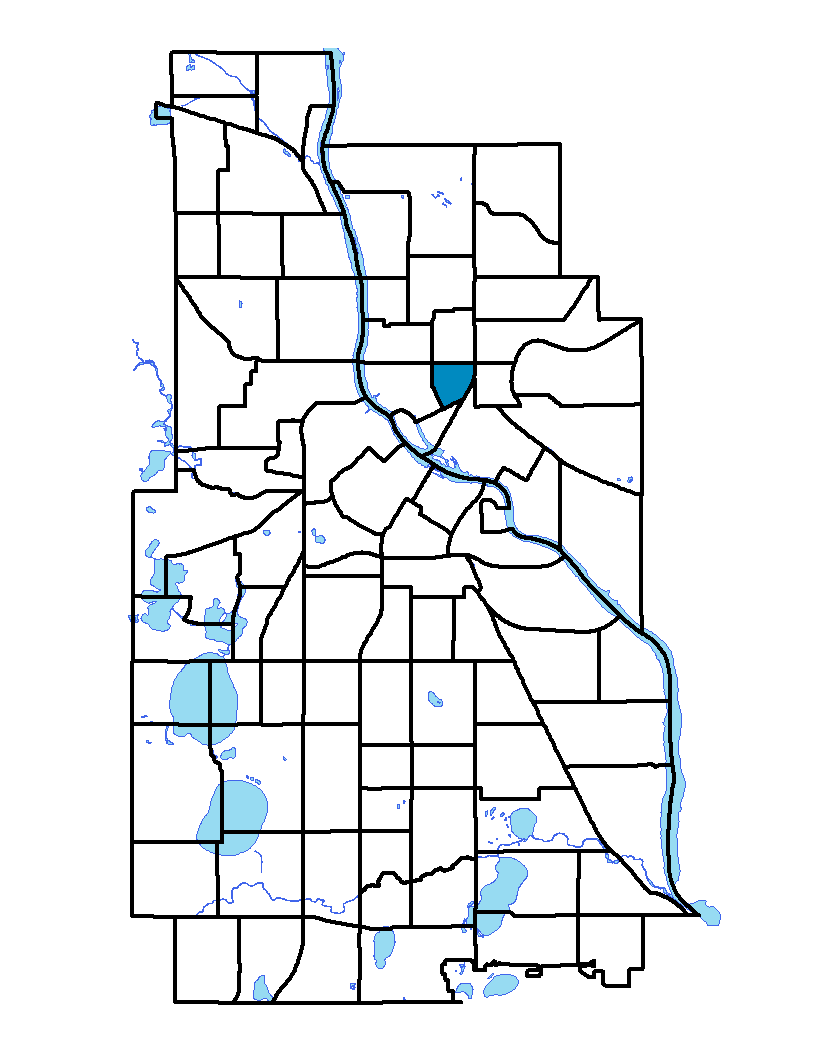St. Anthony East is located in northeast Minneapolis. The neighborhood extends from Broadway Street NE on the northern border to Central Avenue NE on the east and southeast, Second Avenue NE on the south, and then Fifth and Washington streets NE on the west. The St. Anthony waterfall was the true founder of the city – named by Father Louis Hennepin. In the late 1830s, two treaties opened a triangle of land between the St. Croix and Mississippi Rivers for settlement. In 1848, Franklin Steele purchased the land east of the Mississippi River that was soon to become the city of St. Anthony. This purchase gave him control of the water power east of the river. Here he constructed the first commercial mill at the Falls of St. Anthony with the help of a millwright from Maine named Ard Godfrey. Thus began the reputation of Minneapolis as the “Mill City” and the long tradition of industry in Northeast Minneapolis.
To learn more about the neighborhood association visit: www.saenaminneapolis.com
Indicator Details
| Indicators | Primary Domain | Indicator Value |
Rank |
Tier |
|---|---|---|---|---|
| Local Business Vitality | Economic Health | 43.1% | 85 | Bottom |
| Toxic Releases from Facilities | Environmental Hazards | 100.0% | 84 | Bottom |
| Proximity to Superfund Sites | Environmental Hazards | 86.4% | 81 | Bottom |
| Travel Time to Work | Employment Opportunities | 24.3 minutes | 76 | Bottom |
| Tree Cover | Natural Areas | 25.7% | 72 | Bottom |
| Public Assisted Households | Employment Opportunities | 40.6% | 69 | Bottom |
| Preschool Enrollment | Educational Opportunities | 33.3% | 64 | Bottom |
| Proximity to Brownfield Sites | Environmental Hazards | 13.6% | 61 | Bottom |
| Residential Mobility | Social Cohesion | 72.2% | 61 | Bottom |
| Access to Mainstream Financial Services | Economic Health | 30.1% | 57 | Middle |
| Adult Educational Attainment | Educational Opportunities | 86.2% | 53 | Middle |
| Employment Rate | Employment Opportunities | 66.8% | 53 | Middle |
| Access to Parks and Open Space | Natural Areas | 4.4% | 50 | Middle |
| Voter Participation | Social Cohesion | 24.5% | 47 | Middle |
| Preventable Hospitalizations | Health Systems and Public Safety | 2.9 | 46 | Middle |
| Motor Vehicle Collisions | Health Systems and Public Safety | 6.6 | 45 | Middle |
| Excessive Housing Cost Burden | Housing | 27.7% | 40 | Middle |
| Violent Crime | Health Systems and Public Safety | 43.7 | 39 | Middle |
| Age of Housing | Housing | 83.4% | 36 | Middle |
| Commute Mode Share | Transportation | 34.8% | 29 | Top |
| Walkability | Neighborhood Characteristics | 69 | 28 | Top |
| Pedestrian Connectivity | Transportation | 158.4 | 22 | Top |
| Blood Lead Levels in Children | Housing | 2.0% | 20 | Top |
| Low Birth Weight | Health Systems and Public Safety | 4.8% | 20 | Top |
| Household Transportation Costs | Transportation | 15.1% | 19 | Top |
| Vacancy Rates | Housing | 4.6% | 16 | Top |
| Transit Accessibility | Transportation | 492 | 16 | Top |
| Business Retention | Economic Health | 6.4% | 9 | Top |
| Offsite Alcohol Outlets | Neighborhood Characteristics | 1 | 6 | Top |
| Long-Term Unemployment | Employment Opportunities | 1.2% | 3 | Top |
| Residential Proximity to Traffic | Environmental Hazards | 0.0% | 1 | Top |
| Reading Proficiency | Educational Opportunities | -% | - | Data N/A |
| School Proximity to Traffic | Environmental Hazards | -% | - | Data N/A |
| Chronic School Absence | Health Systems and Public Safety | -% | - | Data N/A |
| High School Graduation Rate | Educational Opportunities | -% | - | Data N/A |
| School Readiness Scores | Educational Opportunities | -% | - | Data N/A |
| Food Desert | Neighborhood Characteristics | -% | - | Data N/A |

